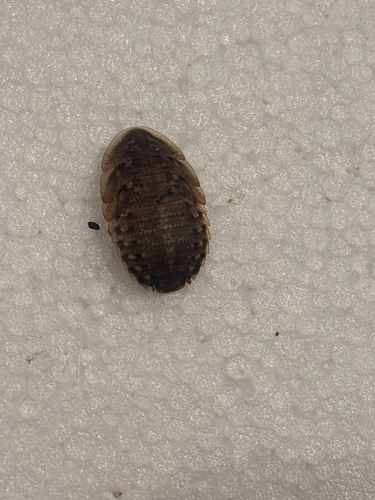Woodlouse (or Pillbug/Sowbug)
Scientific Name: Isopoda
Order & Family: Order: Isopoda, however, identifying the Family/Genus/Species requires more specific features not visible in the image.
Size: Typically 0.5 to 1.5 cm (0.2 to 0.6 inches) in length, depending on the specific species.

Natural Habitat
Damp, dark places such as under rocks, logs, leaf litter, decaying wood, compost piles, and sometimes in basements or bathrooms.
Diet & Feeding
Detritivores, primarily feeding on decaying organic matter, especially dead plant material. They also consume fungi and sometimes small amounts of living plant matter if other food sources are scarce.
Behavior Patterns
Nocturnal, active at night to avoid desiccation. They are known for their 'conglobation' behavior (rolling into a ball) when threatened, particularly pillbugs. They prefer high humidity and will often seek out moist environments.
Risks & Benefits
Generally harmless to humans. They do not bite, sting, or transmit diseases. Benefits include their role as decomposers, helping to break down organic matter and enrich soil. Risks are minimal, though large infestations indoors can be an indicator of moisture problems.
Identified on: 9/19/2025